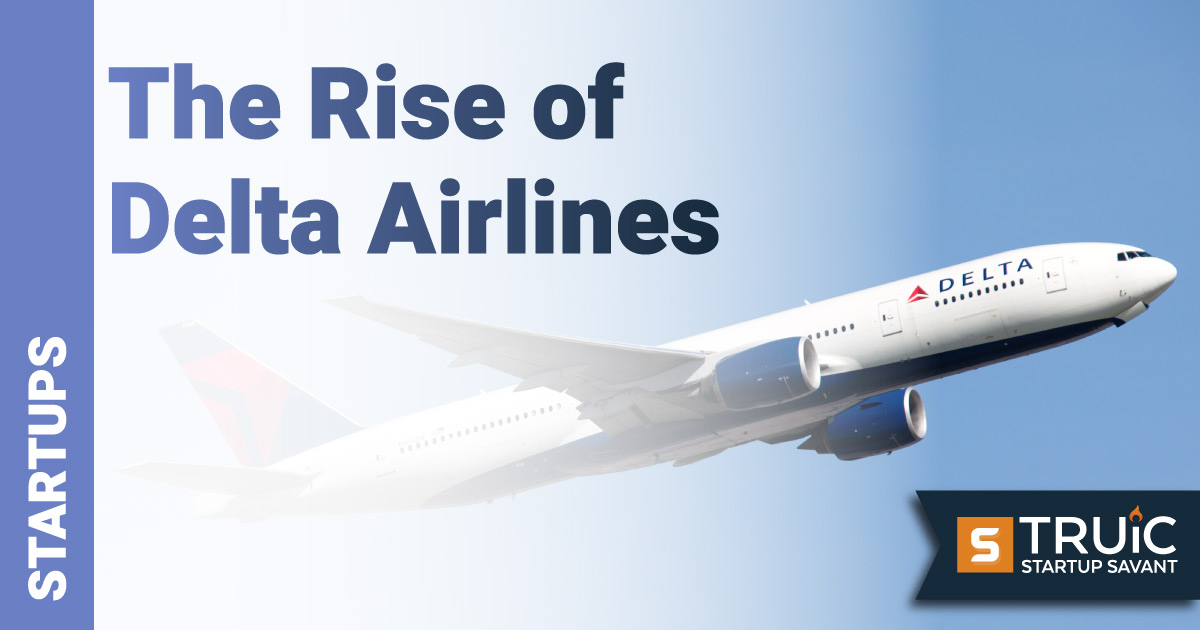There are many success stories in the airline industry, but Delta Airlines is one of the most notable. This company has experienced a lot of growth and change over the years, and it doesn’t seem to be stopping anytime soon.
Let’s take a look at the history and rise of Delta Airlines, including how they started, what business strategy they used to grow, how they changed over time, and where they are heading in the future.
The Beginning
As most startups know, growing into one of the biggest airlines in the world doesn’t happen overnight. Delta is no stranger to humble beginnings, and it originally started as a crop dusting company.
Boll weevils were ruining cotton crops at the time, and a man by the name of C.E. Woolman started to develop an idea of dropping chemicals from a plane to remove the pests permanently and efficiently.
An airplane manufacturer named Huff-Daland Aero Corporation heard of these ideas and decided to start a company for crop dusting.
The company was founded in 1925, but it quickly grew in size as the idea was the first of its kind, and C.E Woolman even joined the team as the chief entomologist. The company had 18 different airplanes and operated the largest privately-owned fleet in the world.
As Huff continued to grow and expand the business in the Southern United States from Florida all the way to California, new opportunities began to present themselves. Huff began collaborating with Pan Am subsidiary Peruvian Airways and started running international mail and passenger routes on the West Coast.
From small dusty beginnings to becoming the premier service of mail and passenger routes on the West Coast, it wouldn’t be long before outside investors wanted a piece of the action.
Delta Airlines’ Growth and Global Influence
Huff Daland was already exploring alternative revenue streams for the company, but it was the buyout from C.E. Woolman that really created the Delta Airlines we know today.
Woolman and some local investors bought out the Huff Daland company in 1928 and renamed it Delta (due to their large presence in the Mississippi Delta area).
It was in 1929 when Delta ran its first passenger flight, leading the company to begin focusing primarily on passenger flights and leaving its crop-dusting beginnings behind.
The large success was not achieved without a fair share of issues, though. In 1930, the airmail contract it worked hard to secure was given away to another airline that had purchased the Delta crop-dusting assets.
Delta immediately halted all passenger flights, and the company was in jeopardy of ending. C.E. Woolman took quick action and gathered local investors to buy back the assets that were originally sold. They incorporated the company at the end of the year as Delta Air Corporation.
After a few years of financial hardship, the company slowly began to rebound in 1934 with the help of a new airmail contract, and by 1936, it was once again profitable.
The company moved headquarters to where it stands today in Atlanta, Georgia, and started focusing on how to grow. It began implementing new technology like radar to make planes safer, began offering the first-ever discounted flights, and expanded to international flights after buying out smaller companies.
Delta continued to push what was possible in the industry by offering the first night service, the first non-stop flight from Chicago to Miami, and the first non-stop flight from Atlanta to LA.
The Next Flight for Delta Airlines
Without the constant innovation in the industry and pushing the boundaries of what was possible, Delta Airlines might not have had the success story you’re reading today.
The company constantly puts itself on the frontlines of innovating technology, product development, and marketing. Throughout the 2000s, it still was the first to introduce mobile bag tracking, and it also paid the most profit-share of a company in US history.
It continues to invest in multiple airlines around the world in an attempt to keep a close eye on where it can absorb companies to keep growing internationally.
Delta opened up plans in 2010 to have the largest product upgrade in its history by applying $2 billion to its fleet. The improvements have caused customer experience to rise, and the investment is paying off dividends for the company.
The COVID-19 pandemic changed how the world functions, and Delta has not only understood this change, but they are leading the charge to make flying a better experience with less hassle.
Delta continues to work on its app, allowing customers easy control over their entire flying experience, from check-in to boarding. They have completely transformed the flying experience by upgrading the entertainment and comfortability of their planes.
They’ve also made huge changes in the economic impact flying has on the world. There are plans for Delta to become the first-ever carbon neutral airline to have international flights.
Utilizing the Strategy of Delta Airlines
As a startup, it may be hard to see how a company grows from nothing to become one of the biggest in the world. In Delta’s case, they’ve had a clear mission to constantly innovate themselves in order to rise above the competition. By consistently changing their product, their marketing, and their service, they’ve been able to stay at the top for almost a century.

